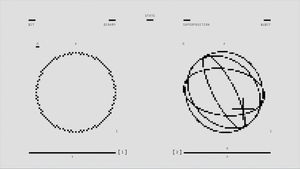The effects of menstrual hormones on women’s physiology have long been emphasized, but new research brings to light how integrated exercise protocols can influence muscular strength. A recent study evaluated the impact of BRACTS exercises—Bending, Roll-ups, Arm swings with loads, Crunches, Tandem walks, and Squats—on the muscular strength of eumenorrheic women throughout different phases of their menstrual cycles.
Conducted by researchers at Riphah International University and Aadil Hospital Defence in Lahore, this study systematically assessed the strength gains of participants engaging in this innovative exercise regime. Through carefully structured randomized controlled trials, the research aimed to answer the pressing question: Can targeted, practical exercise improve muscle strength variably affected by hormonal changes?
The study commenced officially on May 31, 2022, with registrations on clinicaltrials.gov and concluded with results posted on April 29, 2024. Participants underwent assessments of their grip strength and lower body strength at various intervals during their menstrual cycles, focusing on three distinct phases: follicular, mid-cycle, and luteal.
The BRACTS approach was developed as a cost-effective and easily implementable exercise method, fitting perfectly within contemporary health initiatives to promote women's engagement with physical fitness. The study involved 40 eumenorrheic women who were randomly assigned to one of two groups: the experimental group engaged in BRACTS exercises, whereas the control group followed general walking guidelines.
Results indicated significant improvements in muscular strength among those who participated in the BRACTS program, especially highlighting how estrogen levels during the mid-cycle phase positively influenced strength gains. The study concluded, "The BRACTS exercise protocol significantly improves muscular strength across different phases of the menstrual, demonstrating its efficacy as a cost-effective and practical approach." This highlights the importance of creating accessible exercise regimes for women.
The findings not only add to the growing body of knowledge surrounding women’s health and exercise but also empower women to know they can optimize their workout regimes based on menstrual cycles. This breakthrough can have substantial ramifications for the development of fitness programs aimed explicitly at women, particularly athletes who seek to maximize their performance accordingly.
Without doubt, initiatives like this serve to empower women with accessible methods to improve their physical health through exercise. The study urges future explorations to continue delving more deeply, as grasping how hormone levels affect strength can catalyze more personalized health interventions. The improvements noted across all phases of the menstrual cycles reinforce the potential of well-designed exercise protocols like BRACTS, which blend ease of access with effective workout regimens for women everywhere.
The challenge for future researchers will be to refine these exercise protocols and explore their impacts across various populations. Existing beliefs surrounding menstrual cycles and performance could very well be challenged as these methodologies progress.



